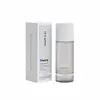What's inside
What's inside
 Key Ingredients
Key Ingredients

 Benefits
Benefits

 Concerns
Concerns

 Ingredients Side-by-side
Ingredients Side-by-side

Water
Skin ConditioningButylene Glycol
HumectantPropanediol
SolventNiacinamide
SmoothingCentella Asiatica Leaf Water
Skin ConditioningTranexamic Acid
AstringentAlpha-Arbutin
AntioxidantEthoxydiglycol
Humectant1,2-Hexanediol
Skin ConditioningPolysorbate 20
EmulsifyingPentylene Glycol
Skin ConditioningPanthenol
Skin ConditioningHexylresorcinol
AntimicrobialGlycyrrhiza Glabra Root Extract
BleachingBeta-Glucan
Skin ConditioningAllantoin
Skin ConditioningCalendula Officinalis Flower Extract
MaskingGlycerin
Humectant4-T-Butylcyclohexanol
MaskingXanthan Gum
EmulsifyingPolyacrylate Crosspolymer-6
Emulsion StabilisingAmmonium Acryloyldimethyltaurate/Vp Copolymer
Citric Acid
BufferingTheobroma Cacao Extract
Skin ConditioningHydrogenated Lecithin
EmulsifyingSodium Metabisulfite
AntioxidantTrisodium Ethylenediamine Disuccinate
Dipotassium Glycyrrhizate
HumectantEthylhexylglycerin
Skin ConditioningStearyl Alcohol
EmollientMyristic Acid
CleansingBehenic Acid
CleansingStearic Acid
CleansingBehenyl Alcohol
EmollientOctanediol
Dextrin
AbsorbentWater, Butylene Glycol, Propanediol, Niacinamide, Centella Asiatica Leaf Water, Tranexamic Acid, Alpha-Arbutin, Ethoxydiglycol, 1,2-Hexanediol, Polysorbate 20, Pentylene Glycol, Panthenol, Hexylresorcinol, Glycyrrhiza Glabra Root Extract, Beta-Glucan, Allantoin, Calendula Officinalis Flower Extract, Glycerin, 4-T-Butylcyclohexanol, Xanthan Gum, Polyacrylate Crosspolymer-6, Ammonium Acryloyldimethyltaurate/Vp Copolymer, Citric Acid, Theobroma Cacao Extract, Hydrogenated Lecithin, Sodium Metabisulfite, Trisodium Ethylenediamine Disuccinate, Dipotassium Glycyrrhizate, Ethylhexylglycerin, Stearyl Alcohol, Myristic Acid, Behenic Acid, Stearic Acid, Behenyl Alcohol, Octanediol, Dextrin
 Reviews
Reviews

Ingredients Explained
These ingredients are found in both products.
Ingredients higher up in an ingredient list are typically present in a larger amount.
Ammonium Acryloyldimethyltaurate/Vp Copolymer (let's call it AAVC for short) is a synthetically created polymer. It's used as a film-forming agent and used to thicken the consistency of products.
AAVC is able to increase the consistency and viscosity of products due to its large molecule size. It also prevents ingredients from separating.
Glycerin is already naturally found in your skin. It helps moisturize and protect your skin.
A study from 2016 found glycerin to be more effective as a humectant than AHAs and hyaluronic acid.
As a humectant, it helps the skin stay hydrated by pulling moisture to your skin. The low molecular weight of glycerin allows it to pull moisture into the deeper layers of your skin.
Hydrated skin improves your skin barrier; Your skin barrier helps protect against irritants and bacteria.
Glycerin has also been found to have antimicrobial and antiviral properties. Due to these properties, glycerin is often used in wound and burn treatments.
In cosmetics, glycerin is usually derived from plants such as soybean or palm. However, it can also be sourced from animals, such as tallow or animal fat.
This ingredient is organic, colorless, odorless, and non-toxic.
Glycerin is the name for this ingredient in American English. British English uses Glycerol/Glycerine.
Learn more about GlycerinPanthenol is a common ingredient that helps hydrate and soothe the skin. It is found naturally in our skin and hair.
There are two forms of panthenol: D and L.
D-panthenol is also known as dexpanthenol. Most cosmetics use dexpanthenol or a mixture of D and L-panthenol.
Panthenol is famous due to its ability to go deeper into the skin's layers. Using this ingredient has numerous pros (and no cons):
Like hyaluronic acid, panthenol is a humectant. Humectants are able to bind and hold large amounts of water to keep skin hydrated.
This ingredient works well for wound healing. It works by increasing tissue in the wound and helps close open wounds.
Once oxidized, panthenol converts to pantothenic acid. Panthothenic acid is found in all living cells.
This ingredient is also referred to as pro-vitamin B5.
Learn more about PanthenolTranexamic Acid is best used for treating hyperpigmentation, discoloration, and melasma. It can also help build a stronger skin barrier.
Once applied, Tranexamic Acid starts decreasing inflammation from UV exposure. Tranexamic Acid also prevents our skin cells from meeting the pigment production cells.
Its brightening property makes it great at reducing the appearance of acne scars and marks.
Fun fact: Tranexamic Acid is also a medication used to reduce heavy bleeding.
This acid is derived from lysine, an amino acid.
Learn more about Tranexamic AcidWater. It's the most common cosmetic ingredient of all. You'll usually see it at the top of ingredient lists, meaning that it makes up the largest part of the product.
So why is it so popular? Water most often acts as a solvent - this means that it helps dissolve other ingredients into the formulation.
You'll also recognize water as that liquid we all need to stay alive. If you see this, drink a glass of water. Stay hydrated!
Learn more about Water